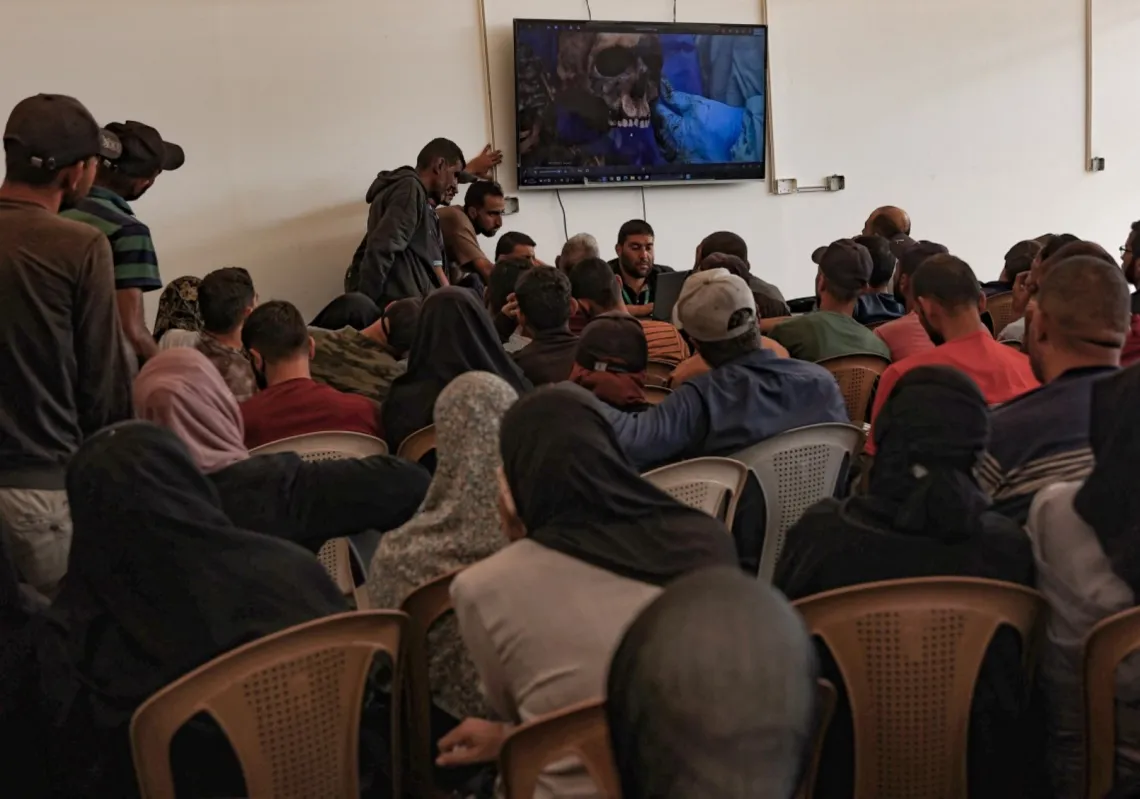 Turkish army tanks and soldiers gather close to the Syrian border on January 21, 2018 at Hassa, in Hatay province. (Getty)[/caption]
Turkish army tanks and soldiers gather close to the Syrian border on January 21, 2018 at Hassa, in Hatay province. (Getty)[/caption]
by Aaron Stein
Last week, Turkey launched an offensive to take control of Afrin, a small and isolated enclave in northwestern Syria controlled by the Kurdish People’s Protection Units (YPG), the Syrian affiliate of the Kurdistan Workers’ Party, which has fought an insurgency in southeastern Turkey for just over three decades. The Turkish offensive has sparked conversation about U.S. strategy in Syria, and in particular whether Washington can balance its relationships with Turkey—a NATO ally—and the Syrian Kurds, who have been the United States’ most reliable partners in the fight against ISIS in Syria.
This debate, however, is too narrow and masks much broader and as yet unanswered questions about the United States’ presence in Syria. Now that Syrian President Bashar al-Assad’s victory over the remaining elements of the anti-regime opposition looks inevitable, how will Washington manage that victory? And, more important, how will the United States get out of Syria?
SLEEPLESS IN SYRIA
As the war against ISIS winds down, a Syria-based U.S. special operations task force is now focused on hunting and killing ISIS leadership and holding territory taken from the group’s remnants in the Syrian desert. The shift in focus has prompted a subtle change in the U.S.-led training of the Syrian Democratic Forces (SDF)—the joint Arab-Kurdish militia led by the YPG—from basic infantry tactics to those more focused on manning defensive positions. This has moved in parallel with U.S. President Donald Trump’s rollout of an updated Syria policy, which commits U.S. forces to maintaining a presence in the SDF-held northeast in order to continue fighting ISIS and hedge against any attempted expansion into the region by the Assad regime.
The United States and Turkey do not operate in a vacuum in Syria, and the other main external actors, Iran and Russia, continue to support Assad in his attempts to take back control over western and eastern Syria. On the eastern front, the regime, backed by Iranian advisers and Russian airpower, has taken control over much of the territory west of the Euphrates River. On the western front, the regime and its allies are fighting Turkish-backed opposition groups and an al Qaeda–linked militia, Hayat Tahrir al-Sham, to connect the Aleppo Governorate—currently controlled by Damascus—with rebel-held Idlib.
Washington has largely given up on the war in the west but has made clear that it intends to stay, indefinitely, in the northeast, where its partnership with the SDF is now the centerpiece of a two-pronged effort. On the military side, the group, with a small, specialized counterterrorism unit and close ties with U.S. Special Forces, is critical to efforts to hunt and kill ISIS leaders. On the political side, the U.S. military garrisons are intended to increase Washington’s leverage at the UN-sponsored peace talks in Geneva, where it is pushing for an agreement that would remove Assad from power in a future election.
In fact, the SDF could prove to be the centerpiece of a U.S.-Russian deal on Syria. Russia has vocally opposed an indefinite U.S. presence in the country. Yet Moscow has to balance its narrow, anti-U.S. instincts with its broader policy goal: leaving behind a friendly regime, preferably one with Assad still in power. The SDF, unlike most of the opposition, has never committed itself to regime change. Instead, it has maintained a relatively stable nonaggression pact with the regime, and the two sides have managed to prevent unintended military escalation during times of tension.
A permanent agreement between the SDF and the regime would not come easily. The SDF is ideologically committed to a concept of extreme decentralization and local, autonomous rule, which is anathema to the Assad regime. The SDF has also expanded its control over territory far beyond its Kurdish-majority strongholds along the Syrian-Turkish border. The expansion of Kurdish control to Arab-majority cities along the Euphrates has required compromise with local Arab populations and the integration of Arab recruits and militias into the SDF superstructure. This has allowed the group to work with local Arabs, often culled from the countryside populations near urban centers, to manage the local governing councils placed in charge of former ISIS-held cities and towns. To win over Arab support in certain areas, the SDF has pledged to keep the regime from returning—a promise that is easily kept only so long as the U.S. military remains in place.
THE ART OF THE DEAL
The longer-term issue, of course, is that the U.S. military will not stay in Syria forever. The trajectory of the conflict clearly points to a regime victory in the west. This would leave a small, Turkish-run enclave connecting Afrin with Turkish-occupied north Aleppo, surrounded by a regime, Iranian, and Russian military presence along the western coast and in government-controlled areas in eastern Syria. The Turkish-SDF borders will remain tense, but Ankara may face limits should it choose to use territory it controls as a base for offensive military operations. And Turkey’s chosen opposition groups, such as Sultan Murad, Faylaq al-Sham, and Ahrar al-Sham, remain committed to Assad’s overthrow.
The SDF, in contrast, will have to control its own internal dynamics. The YPG has deftly managed relations with the regime and, in exchange for some autonomous rule, could try to reach a peace agreement with Assad, likely based on decentralized rule by the local councils that administer Syria’s cities. The challenge to such a deal would come from the Arab elements within the SDF, which will be opposed to even a soft return of the regime in SDF-controlled territory and could choose to fight to maintain control over the cities and towns. Yet these Arab militias are weak and could be compelled by the YPG to accept a negotiated peace, so long as the regime makes some concessions.
Russia may share the YPG’s interest in reaching an agreement. Moscow, therefore, could be an important actor in helping to broker agreements with the Syrian Kurds in the northwest, where the Russian military is the dominant external actor. A negotiated peace between the regime and the SDF is the only way for the United States to leave behind a stable northeastern Syria, and here its interests may narrowly overlap with those of Moscow. Such an outcome is anathema to the Turkish position, but Ankara is weaker than Russia and the United States. Turkey also faces a longer-term challenge: the groups it backs have aways been hostile to the regime and so will always be viewed as a threat. This may make the Turkish positions in Syria untenable and could eventually result in a regime-led offensive to clear territory where Turkish-backed groups are dominant.
The United States has a clear path to withdrawal: a negotiated settlement between the SDF and the regime. Moscow shares this narrow interest. The two sides diverge on the question of whether Assad should remain in power. The Trump administration is committed to a transfer of power, so compromise may be hard to swallow in Washington. Turkey, meanwhile, is narrowly focused on blunting the Kurdish threat, but its Syrian allies may ultimately be destroyed by the regime.
The Syrian war is still in flux. For the United States, withdrawing will require making tough choices about a regime that Washington still wants to remove. In the short term, things will get more complicated. In the longer term, the outcome is clear: the regime will win its war against much of the opposition. For the United States the challenge now is to recognize that victory and leave on acceptable terms.
This article was originally published on ForeignAffairs.com.








